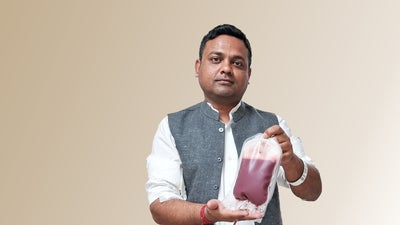Know how Ethnicity plays a role when a patient needs a Blood Stem Cell Transplant
Ethnicity goes beyond just being a mark of our identity. Our ethnicity is indeed a lifesaving factor for people suffering from blood cancer or other blood-related disorders.
Ethnicity goes beyond just being a mark of our identity. Our ethnicity is indeed a lifesaving factor for people suffering from blood cancer or other blood-related disorders. An individual diagnosed with Thalassemia, Aplastic Anemia, or other blood-related disorder usually requires a successful blood stem cell transplant to survive which further requires a perfect HLA (Human Leukocyte Antigen) tissue match to conduct the transplant process. That’s when ‘ethnicity’ comes into play.
Human leukocyte antigen (HLA) typing is used to match patients and donors for stem cell transplants. HLA are proteins (or markers) found on most cells in your body that are used to recognize which cells belong in our body and which do not. Patients and donors of Indian origin have unique HLA characteristics. Indian patients mainly require an Indian tissue match for a transplant to take place.
Take the case of Meena, who is an incredible mother of five-year-old twins from St Albans. Meena has been diagnosed with Acute Myeloid Leukemia and needs a blood stem cell transplant in her critical fight against Leukemia. Meena is currently on the lookout for finding a possible match. Though Meena stays in Britain, because of her Indian (Punjabi) ethnicity, a successful transplant is possible by finding a donor of Indian ethnicity because of similar HLA type which is key for a successful transplant and in turn give her a second chance at life.
Patients and donors of Indian origin have unique HLA characteristics that are severely under-represented in the global database, which makes the probability of finding a suitable donor even more difficult. Every year, of about the 80,000 donor searches initiated across the globe, India has one of the highest ratios of searches that do not result in blood stem cell transplants. Mainly because Indian patients require an Indian tissue match.
There are thousands of HLA characteristics that exist (and more keep being discovered), which exist in millions of combinations. This makes finding matches really difficult. That's why it's so important to have more Indians become potential donors. In India, only 0.03% of the total population are registered as blood stem cell donors, which is significantly lower than many other countries, including the US where 2.7% of the population are registered and Germany where 10% of `the population is registered.
Hence, to increase the probability of finding a matching unrelated adult donor for an Indian patient, the number of potential blood stem cell donors of Indian origin has to be increased.
Get on the registry and save a life!


